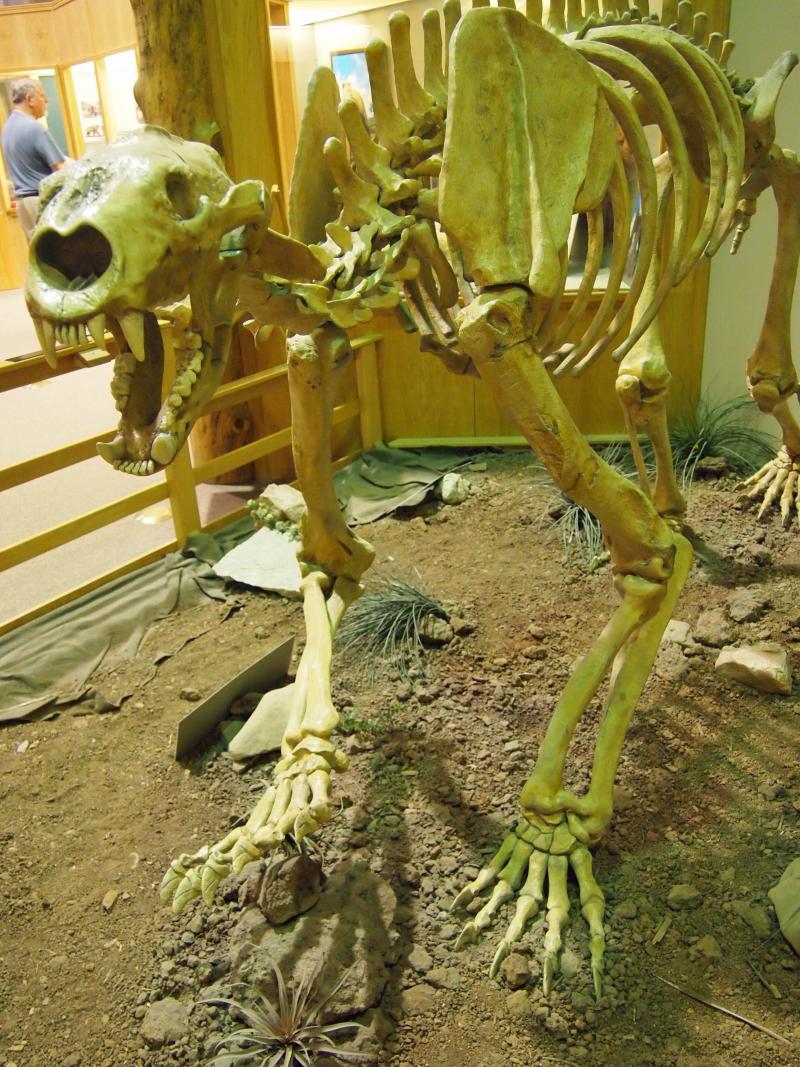
This week on Fossil Friday, I went out on a limb and gave you what I thought would be an easy paw of an answer. But no—people actually found this one tricky! We got a vote for a Dimetrodon and a vote for a Eusuchia, but a mystery guest was the first to get the closest with “cave bear.” And it turns out it is a bear—a short-faced bear (Arctodus sp.).
From the Yukon Beringia Interpretive Center:
“Presumably the giant short-faced bear was a rather solitary scavenger or predator except for mothers with cubs and during the mating period. The light, long-legged, short-necked body; the skull with its vise-like jaws, stout fangs and short, broad muzzle (like lions) all indicate that this animal was capable of bursts of speed when necessary and covering large areas for prey or for carcasses on which to scavenge...Isotopic analysis of Alaskan and Yukon short-faced bear bones supports the idea that they were highly carnivorous. The great width between the canine teeth may have allowed a more secure grip on prey and/or the wide snout might be related to a keenly developed sense of smell. The situation is similar in the polar bear the most carnivorous of living bears. Arctodus simus may have scavenged and preyed on large herbivores, such as bison...muskoxen, caribou, deer, horses and ground sloths.”
I found this epic video of bear vs. sloth—look out, sloth! My favorite part is when they break out into a boxing match in the end...go sloth, go!

